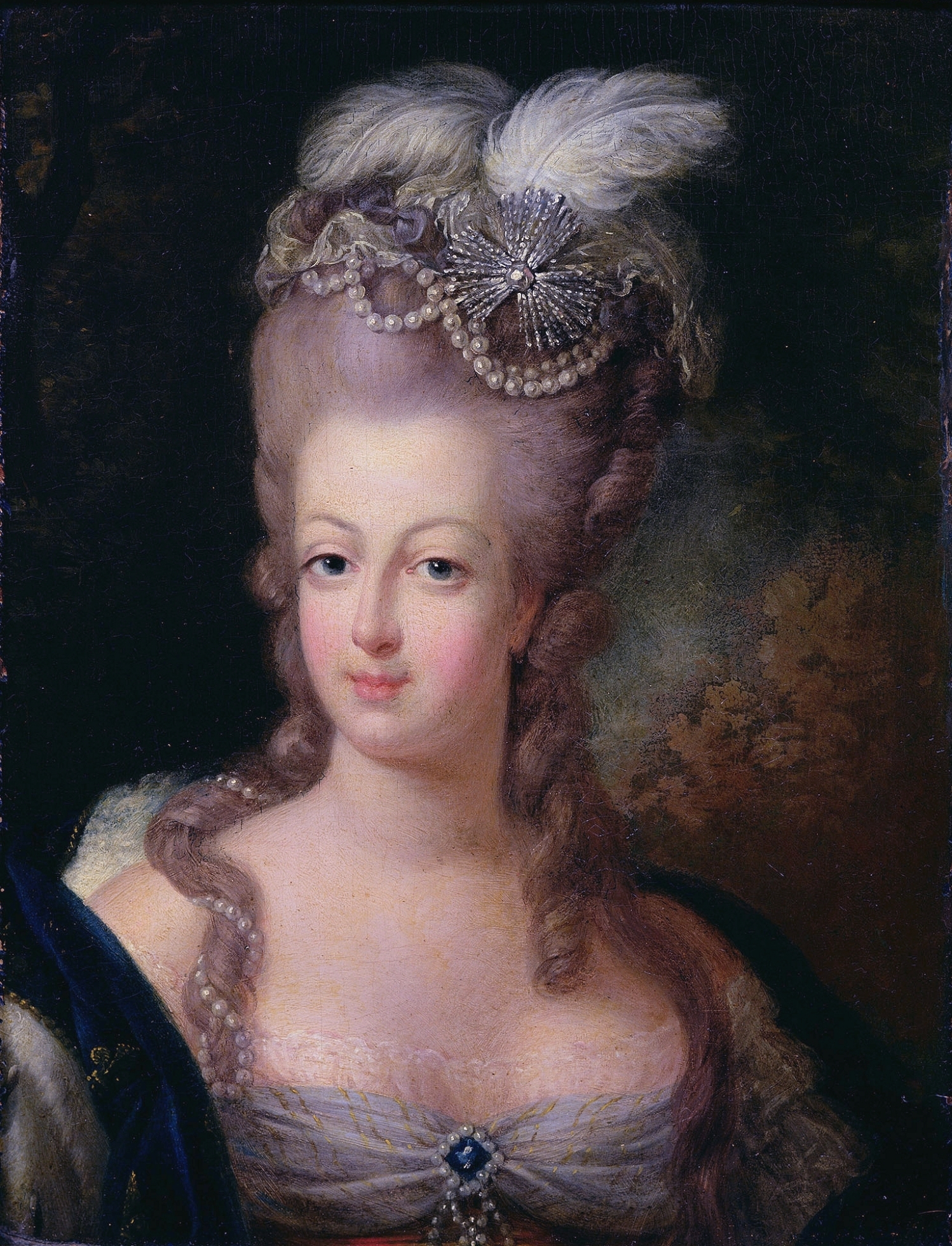
The poisonous ceruse came from the center of fashion in Europe; Venice, and being a very expensive cosmetic to make it was consumed by wealthy classes. To emulate a translucent skin, veins were painted on the chest and neck, while the lips and cheeks wee painted darker shades of pink and red.
Mixtures of rhubarb in lye, turmeric, and alum were all used to bleach hair blonde, which was the most fashionable hair color at the time. Auburn, the color of Elizabeth's hair was the second most common hair dye color.
Variations on Queen Elizabeth's makeup stayed in fashion until the 19th century. Results of the plague and lead powder left pockmarks and scars on the face, patches made of small sections of leather in the shapes of stars and moons decorated the face and covered the marks. Bathing was not a frequent occurrence during this time, but musky perfumes were applied to clothes, gloves, and wigs.
Cosmetics and perfumes were also compounded by the lower classes, a variety of herbs local to Britain could be dried out and mixed with vinegar, waters, and pastes. Originally the mixtures had medicinal purposes, but later developed into recipe books for cosmetic and home uses. Spices and perfumes were brought over to England by the East India trading company, and became readily available to the wealthier classes.

The Puritans were a prominent religious movement in the 17th century, and soap was the only cosmetic approved of by the Puritans. For them, the connection between makeup use and witchcraft was irrefutable, and was only used by licentious women.
The Puritans believed cosmetics were a deceptive device to lure men into marriage. Cosmetics were tied to witchcraft, and it's use untimely became punishable by law. (Hernandez, 33)
Similar to the fashion of the time, Puritan women favored an enlarged, exposed forehead and hairless face. They plucked to remove their eyebrows and upper hairline to accentuate the forehead. However, other forms of excessive vanity, beautification, and the use of mirrors was the work of the devil.

By the end of the 1600's, the influence of the Puritans had faded and the use of cosmetics became more widely accepted. Because bathing practices were still not commonplace, perfumed soaps, incense, and pomanders were typical, holding liquid scents of clove, lavender, and rosemary.
Makeup was now available to many classes and at cheaper prices. Cosmetic crayons were created out of a mix of plaster, wax, and coloring. Red ochre, powder, hair-dye, and cosmetic creams were available to the public by merchants and peddlers. The same mixtures of soap/astringent facial cleansers continued to be used by women until the Victorian era.
Dental hygiene practice became common as well, as toothpicks and tooth cleaning mixtures of abrasive powders were used.
On page 34, Hernandez lists items that frequented the ladies' toilette:
-bear's grease
-orange flower water
-perfumed oil
-powder boxes
-hair brushes
-dressing pins
-taffeta or leather face patches
-face paints

During the 18th century, makeup and fashion began to draw a distinct line between classes, as royalty and nobility began to adorn themselves with lavish makeup, elaborate wigs, and dramatic fashion. Perfume companies had begun to establish themselves, and a variety of scented products were prized.
Fragrance was sprinkled on items such as clothing, breath freshener pastilles, home incense, and potpourri. Fancy trinket boxes contained squares of fabric dipped in fragrance. ( 36)
The toxic properties of ceruse had been well-known since the Romans, and the facial deformations and poisonings it caused did not deter it's use in the 18th century. It was often applied in thick layers and kept on the face for lengthy amounts of time, most likely covering the damage to the skin it had originally caused.
Other than white face powder, rogue was secondary in popularity. Varieties of colors were made to accommodate the changes in fashion, and was worn by men and women alike. The intensity of rouge coloring was based on it's main ingredient; carmine which was made from brightly colored beetles often appeared vividly on the face, while rogues derived from vegetables and plants created a subtler shade.

Like the fashion and wigs of the time, the French preferred a noticeable style of makeup of pink lips, pink cheeks, pale skin, and darkened eyebrows defined by burnt cork or elderberries. They even made fake eyebrows out of mouse hair from 1700-1780.
The overt materialism of the upper-classes (especially those of the French Louis XVI and Marie Antoinette) and the undeniable class definition became disdainful during the French revolution. After the revolution in the late 1700s, natural hairstyles and natural beauty became favorable over powder and wigs.
Americans did not have access to the pomatum, cosmetic cakes, and lip salves of the Europeans, however, the tune of Yankee Doodle Dandy refers to the Italian fashion Macaroni movement of men who wore elaborate fashions, makeup, and hair powder. Dental practices still lacked in the Americas, and cheek plumpers were used to fill in the spaces of the cheeks where teeth had been lost. False teeth made of wood, bone, ivory, and sometimes human teeth from the deceased were used to create sets. Tongue sponges and scrapers were used to combat bad breath, and teeth were scrubbed with abrasive powder.
Fashion magazines began to be publishes in the 1770's, full of details on clothing, hair, and cosmetics it spread trends throughout Europe and even the Americas. Taxes in the U.K. on cosmetic items like hairpieces, hair powder, and pomade caused a decline in the wearing of intricate hair formations and wigs. By the 1800's, live-in servants were the only ones seen sporting powdered wigs and the trend fell out of fashion.
Works cited:
Hernandez, Gabriela. Classic Beauty, The History Of Makeup. Atglen, PA: Schiffer Publishing Ltd, 2013. Print.
No comments:
Post a Comment